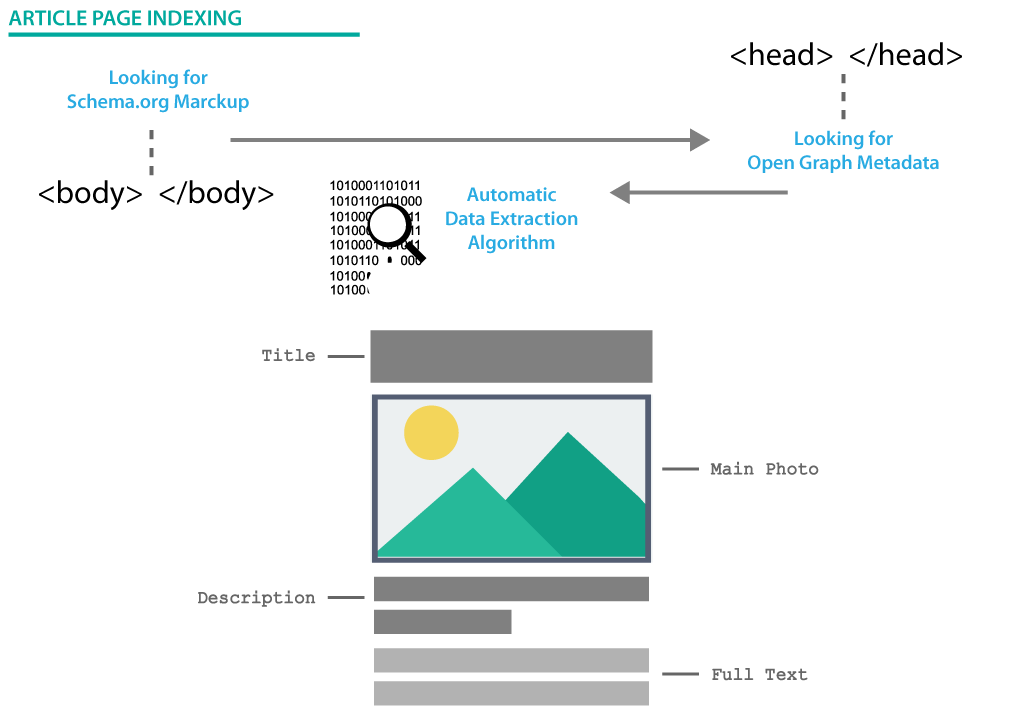RSS Feeds FAQs
What are the requirements for the specified tracking page?
The tracking page must be publicly accessible, feature recognizable HTML code, and include links to internal publication pages.
How does automatic feed creation work?
The feed is generated based on the content received from the website. The data sources can include Schema.org markup such as Article, NewsArticle, BlogPosting, LiveBlogPosting, and Open Graph Article metadata, along with standard HTML document tags.
If no structured data is detected on the website, MySitemapGenerator will attempt to automatically identify the content of publications using an AI-based extraction algorithm. However, to achieve better results, we recommend implementing Schema.org markup on your website.
If no structured data is detected on the website, MySitemapGenerator will attempt to automatically identify the content of publications using an AI-based extraction algorithm. However, to achieve better results, we recommend implementing Schema.org markup on your website.
How MySitemapGenerator finds and understands articles published on the website

What types of structured data are retrieved by MySitemapGenerator
MySitemapGenerator retrieves several types of structured data. The supported Schema.org markup types include: Article, NewsArticle, BlogPosting, LiveBlogPosting.
Basic properties:
Schema.org markup sample for news article:
Schema.org markup sample for any article:
Additionally, MySitemapGenerator supports Open Graph metadata, specifically for the Article type.
Basic properties:
Open Graph markup example:
An example of pure HTML markup:
Basic properties:
- headline - Article title.
- description - Article short description.
- articleBody - Article text.
- image - The URL of an image resource .
- category - Article category.
- datePublished - Date.
Schema.org markup sample for news article:
<div vocab="http://schema.org/" typeof="NewsArticle">
...
<h1 property="headline">Article title</h1>
<span property="description">Article short description</span>
<img itemprop="image" src="http://youwebsiteurl/pictures/thumbnail.jpg" />
<span itemprop="datePublished" content="1998-09-04T19:25:33+00:00">Today, 19:25</span>
...
<div property="articleBody">
<p>Article full contents</p>
...
</div>
...
</div>
Schema.org markup sample for any article:
<div itemscope itemtype="http://schema.org/Article"> <h1 itemprop="headline">Article title</h1> <div itemprop="description">Article short description</div> <div itemprop="articleBody"> <p>Article full contents</p> ... </div> </div>
Additionally, MySitemapGenerator supports Open Graph metadata, specifically for the Article type.
Basic properties:
- og:title — Article title.
- og:description — Article short description.
- og:image — The URL of an image resource.
- article:published_time - Date.
Open Graph markup example:
<meta property="og:type" content="article" />
<meta property="og:title" content="Article title" />
<meta property="og:description" content="Article short description" />
<meta property="og:image" content="http://youwebsiteurl/pictures/thumbnail.jpg" />
<meta property="article:published_time" content="1998-09-04T19:25:33+00:00" />
An example of pure HTML markup:
...
<head>
...
<title>Article title</title>
<meta name="description" content="Article short description" />
...
</head>
<body>
...
<article>
<p>Article full contents</p>
...
</article>
...
</body>
...
How is the formation of full-text RSS in the format for export to Google Publisher Center?
In addition to standard RSS 2.0 elements, the special element "content:encoded" is required to export data to Google Publisher Center, which contains the full contents of the publication:
To include the full content of publications, the feed must use the additional namespace:
HTML-formatted text should be wrapped by CDATA section.
Our crawler extracts the full text of publications on web pages using an AI algorithm, as well as on pages marked up with Schema.org markup (supported types: Article, NewsArticle, BlogPosting, LiveBlogPosting).
<content:encoded>Full contents of the publication</content:encoded>
To include the full content of publications, the feed must use the additional namespace:
xmlns:content="http://purl.org/rss/1.0/modules/content/"
Our crawler extracts the full text of publications on web pages using an AI algorithm, as well as on pages marked up with Schema.org markup (supported types: Article, NewsArticle, BlogPosting, LiveBlogPosting).
How occurs RSS forming in the format of data export to Yandex News?
Along with standard RSS 2.0 elements, in order to export data into Yandex a special elemnt "yandex-fulltext" is needed, which should contain full contents of the publication:
To include the full content of publications, the feed must use the additional namespace:
HTML-formatted text should be wrapped by CDATA section.
Full text should not contain the name of the source and date/time of the publication, and contact information or any other information, which is repeated in every publication.
<yandex-fulltext>Full contents of the publication</yandex-fulltext>
To include the full content of publications, the feed must use the additional namespace:
xmlns:yandex="http://news.yandex.ru"
Full text should not contain the name of the source and date/time of the publication, and contact information or any other information, which is repeated in every publication.
How do you let visitors know you have an RSS feed?
The easiest way is to create a link to your RSS feed and place it on your website. By clicking on it, visitors will be able to subscribe to updates through their RSS reader.
Another way is to add a following meta tag to the <head> section of the HTML-page:
* "Feed Title" - RSS feed title,
** "URL" - Destination feed URL.
When your site contains this meta tag, some browsers add a special icon, which is a link to your RSS feed, located in the right corner of the address bar.
<a href="URL**">Subscribe via RSS</a>
Another way is to add a following meta tag to the <head> section of the HTML-page:
<head> … <link rel="alternate" type="application/rss+xml" title="Feed Title*" href="URL**"> … </head>
* "Feed Title" - RSS feed title,
** "URL" - Destination feed URL.
When your site contains this meta tag, some browsers add a special icon, which is a link to your RSS feed, located in the right corner of the address bar.

